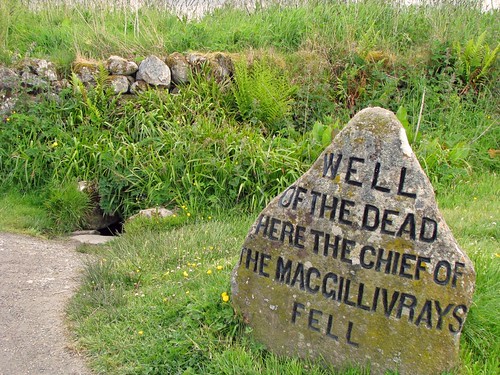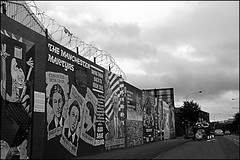4:45 a.m. Yes, that's right. We were up early on July 15. Our sweet B&B hostess, Erna, laid our juice and milk in thermosses so that we could have cereal and fruit before we headed off on another long day of travel. So, walking, train, taxi, plane, car, and we were zipping out of Glasgow and into the Scottish Highland.
Our first truly, "Ahhhhhhhhh!" (think angels singing) moment was driving around the rugged, misty, and green beauty around Loch Lomond. (Insert the song "Ye'll take the high road, and I'll take the low road, and I'll be in Scoptland afore ye.......on the bonnie, bonnie banks of Loch Lomond!" Just try and get that out of your head.) From there we drove up to the "Rest-and-Be-Thankful Pass" which gave more views of the craggy mountains and green valleys. This was the pass where 2nd and 3rd-class coach passengers would get out and push the coach and the first-class passengers up the hill in the 1880's. Funny!
From there we headed to Oban. What a gorgeous home base and known as the "gateway to the isles." On Friday we headed to the islands of Mull and Iona. From Oban we took a ferry to the Isle of Mull.
We took a scenic drive through Mull with a hilarious bus driver that told funny anecdotes about "wee little Belgian man that does all of our thinking for us (in reference to the European commission)" or the tour guide from Edinburgh who didn't know anything about the islands and would just fill those American tourists heads with nonsense about Scots spending their days tossing cabers, doing the Highland fling, cutting peat for heat because they're so poor, and playing their bagpipes. Needless to say, the locals were sickened by the nonsense the man was imparting to those naive people and were not a bit upset when a bee flew up the man's kilt and stung him!
At the far side of Mull at Fionnphort, we got on a smaller ferry that rocked quite a bit (Thank you Bonine!) and we reached Iona. Iona is known as the birthplace of Christianity in Scotland. St. Columba came from Ireland in 563 and set up an abbey on Iona. This became the center of Celtic Christianity. Missionaries were sent out from Iona to spread the gospel throughout Scotland and Northern Ireland. Iona was also a place for learning and the arts. It was here that the Book of Kells was started. We saw the original at Trinity College in Dublin. Iona was so important at that time that it was a legendary burial place for important Scottish lairds and even Scandinavian kings (even the real MacBeth from Shakespeare). We saw the road where they would have the procession of the dead to the cemetary. There were some intricate stone Celtic Crosses and a copy of the Book of Kells. They also have a nunnery on this island that thrived at that time. Now Iona has a population of only around 100, but it was incredible yet again to see places that God has used to preserve his Word and spread his Gospel.



